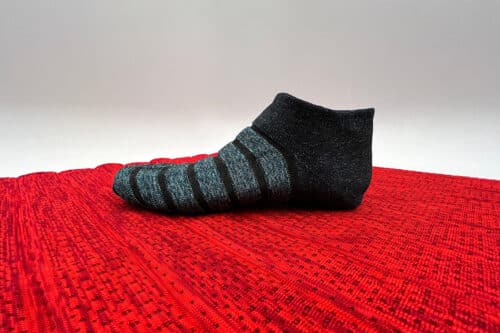
(Image Credit: Irmandy Wicaksono, MIT News)
By using a special fabrication process researchers at MIT have come up with a piece of smart fabric that not only has a snug fit but can conform to the body so as to sense the wearer’s posture and motions.
Thermoforming, a process where a special type of plastic yarn is reformed by applying heat to slightly melt it, and improve the precision of pressure sensors woven into multilayered knit textiles, which they call 3DKnITS. The process is then used to create smart textiles, namely shoes and mats, and a hardware and software system to measure and interpret data from the pressure sensors in real-time. A machine-learning algorithm then predicts motions and yoga postures performed by an individual standing on the smart fabric mat with about 99 per cent accuracy.
The fabrication process, which takes advantage of digital knitting technology, allows rapid prototyping and can be easily scaled up for large-scale manufacturing, says Irmandy Wicaksono, a research assistant in the MIT Media Lab and lead author of a paper presenting 3DKnITS. “With digital knitting, you have this freedom to design your own patterns and also integrate sensors within the structure itself, so it becomes seamless and comfortable, and you can develop it based on the shape of your body,” said Wicaksono.
“Some of the early pioneering work on smart fabrics happened at the Media Lab in the late ’90s. The materials, embeddable electronics, and fabrication machines have advanced enormously since then,” said Paradiso. “It’s a great time to see our research returning to this area, for example through projects like Irmandy’s — they point at an exciting future where sensing and functions diffuse more fluidly into materials and open up enormous possibilities.”
“It’s always amazing to see technology advance in ways that are so meaningful. It is incredible to think that the clothing we wear, an arm sleeve or a sock, can be created in ways that its three-dimensional structure can be used for sensing,” said Eric Berkson, assistant professor of orthopaedic surgery at Harvard Medical School and sports medicine orthopaedic surgeon at Massachusetts General Hospital, who was not involved in this research. “In the medical field, and in orthopaedic sports medicine specifically, this technology provides the ability to better detect and classify motion and to recognize force distribution patterns in real-world (out of the laboratory) situations. This is the type of thinking that will enhance injury prevention and detection techniques and help evaluate and direct rehabilitation.”
The published paper can be found here.








